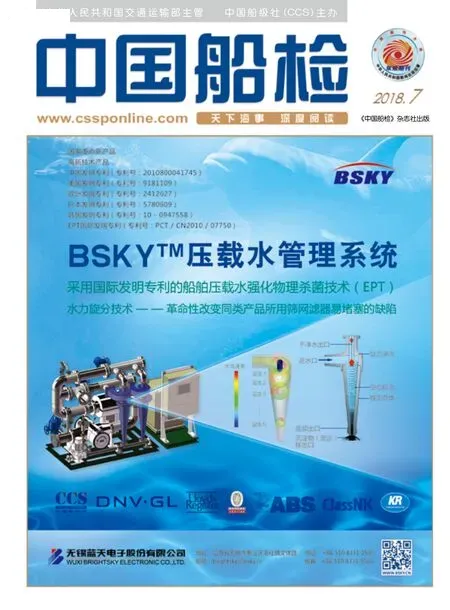The latest development trend of LNG-powered ship
By Wang Lipeng Ji Yongbo

With the increasingly stringent requirements of the International Maritime Organization(IMO) for the discharge of marine pollutants, LNG fuel has become one of the main alternative fuels for international ships in the future.Since 2016, the carnival group, CMA CGM, the French cruise ship and other enterprises had placed orders for LNG power ships, especially the 9 super large LNG-powered container ships of 22000TEU ordered by CMA CGM, which has activated the boom of LNG ships in the world.
LNG fuel was first used on LNG carriers and began to be used as fuel for ships in the Nordic region around 2000. As of March 2018, about 248 LNG-powered ships are operating and are being built, which are mainly passenger ferry, platform supply ship and cargo ship operating in the coastal waters of northern Europe. As the IMO “international safety rules for ships using gas or other low flash fuels” (IGF rules) and the mandatory relevant amendments to the SOLAS convention take effect on January 1, 2017, clear requirements have been set for design, construction, operation and crew qualification of the LNG-powered ship. According to incomplete statistics, the number of LNG ships under plan or contract in the world has reached 182. Compared with the existing ships, the new orders of LNG-powered ships have the characteristics as follows:
Large-size of the newbuildings. Compared with the early inter Island ferry, platform supply ship and coastal cargo ship, the LNG-powered ship built in 2016 has become larger and larger. For example, the 4 LNG-powered luxury cruise ship of the carnival group is equipped with 5000 bed berths and can provide accommodation for 6600 passengers, which is the largest cruise ship in the world. The 9 super large LNG-powered container ships with 22000TEU built by CMA CGM are also the largest container ships in the world.
Globalization of shipping routes. In the early days,foreign LNG-powered ships mainly navigated on the European coast and inland rivers. After 2016, the trend of using LNG fuel on global routes was more obvious. For example, 9 LNG-powered container ships in France are going to operate between Asia and Europe, and Volkswagen will lease 2 LNG-powered car carriers from Siem Car Carriers in 2019 to replace their fleet operating between Europe and North America.The Japanese TOYOTA also plans to invest in the construction of 20 LNG-powered car carriers with 7000 parking space to operate in North American route.
Ocean-going ships are changing from “LNG-ready” to new LNG-powered ships. Previously, ocean shipping shipowners tended to choose “LNG-ready”, such as the 9 container ships made by UASC, the 4 super large tankers made by the Maran Tankers company and the super large liquefied gas vessel made by Dorian LPG,which are designed as “LNG-ready” that can be easily converted into LNG-powered ships. After 2016, the ship owner began to change. The shipowners, represented by the CMA CGM, the carnival group, the French cruise ship and the Japanese TOYOTA, are more willing to build LNG-powered ship directly.

